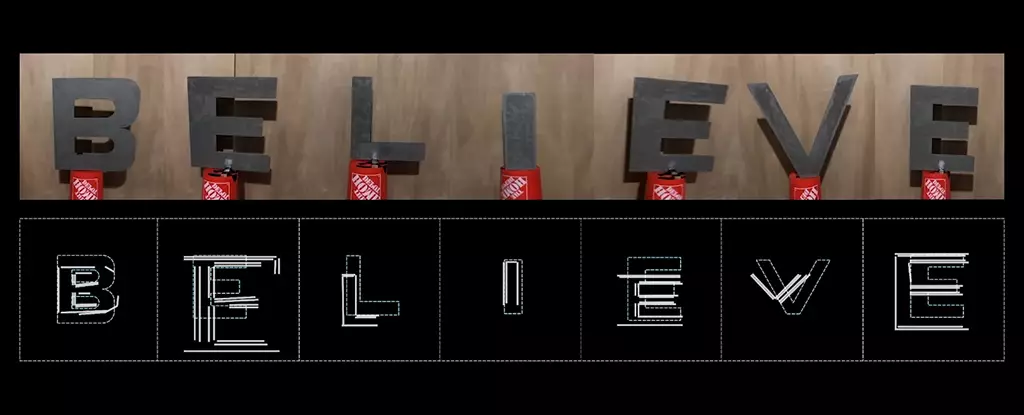Wi-Fi signals have long been used for transmitting data and connecting devices, but recent experiments have shown that they can do much more. While Wi-Fi has the ability to detect movement through walls, it struggles when it comes to identifying stationary objects. To overcome this limitation, researchers at the University of California Santa Barbara (UCSB) have developed a novel approach to concentrate on the edges of objects, similar to the way an artist outlines a drawing. By utilizing the Geometrical Theory of Diffraction (GTD), the behavior of Wi-Fi waves as they encounter the edges of objects can be analyzed, revealing the composition and direction of the waves.
In this groundbreaking experiment, the Wi-Fi signals are transformed into shapes known as Keller cones as they diffract around the edges of objects. Using these conic footprints as signatures, the researchers have devised a mathematical framework to infer the orientation of edges, creating an edge map of the scene. This innovative setup, known as Wiffract, involves three Wi-Fi transmitters that emit signals, while a roving receiver captures and analyzes the signals as they bounce around the environment.
Determining the shapes corresponding to the Keller cones requires complex mathematical calculations and educated estimations. By using data from edges with strong readings, the scientists have been able to enhance the system’s ability to detect edges with weaker readings. This improvement is especially useful for detecting edges that are further away from the transmitters or concealed in hidden spots. Bayesian information propagation, a statistical method, is employed to propagate the information of high-confidence edge points to the rest of the points. This process is akin to solving a jigsaw puzzle, where knowledge of the position of certain pieces helps determine the position and shape of other pieces needed to complete the puzzle.
While further refinement is necessary, the current system already demonstrates the capability to recognize large letters. This breakthrough technology has the potential to be applied in various fields, ranging from disaster rescue operations to smart home monitoring. Wi-Fi imaging could enable responders to “see” inside rooms without a direct line of sight, providing valuable information in emergency situations. Additionally, smart home monitoring systems could benefit from this technology by offering enhanced security measures and the ability to detect intruders or monitor the well-being of occupants.
As Wi-Fi technology continues to evolve, the possibilities for its application will expand. By pushing the boundaries of how Wi-Fi signals are utilized, researchers are opening up a new realm of possibilities. Imagine a future where Wi-Fi technology can provide detailed imaging and mapping capabilities through walls, offering a new level of insight and convenience. With further development and fine-tuning, this groundbreaking innovation could pave the way for a revolutionary advancement in wireless communication and sensing.
The ability to see through walls using Wi-Fi signals is no longer confined to the realm of science fiction. Through innovative research and the application of mathematical theories, scientists at UCSB have successfully harnessed the potential of Wi-Fi to identify shapes and objects beyond mere data transmission. This breakthrough technology has the potential to transform industries and revolutionize our everyday lives. Wi-Fi is no longer just a means for connecting devices; it has become a powerful tool for imaging, monitoring, and understanding the world around us.


Leave a Reply